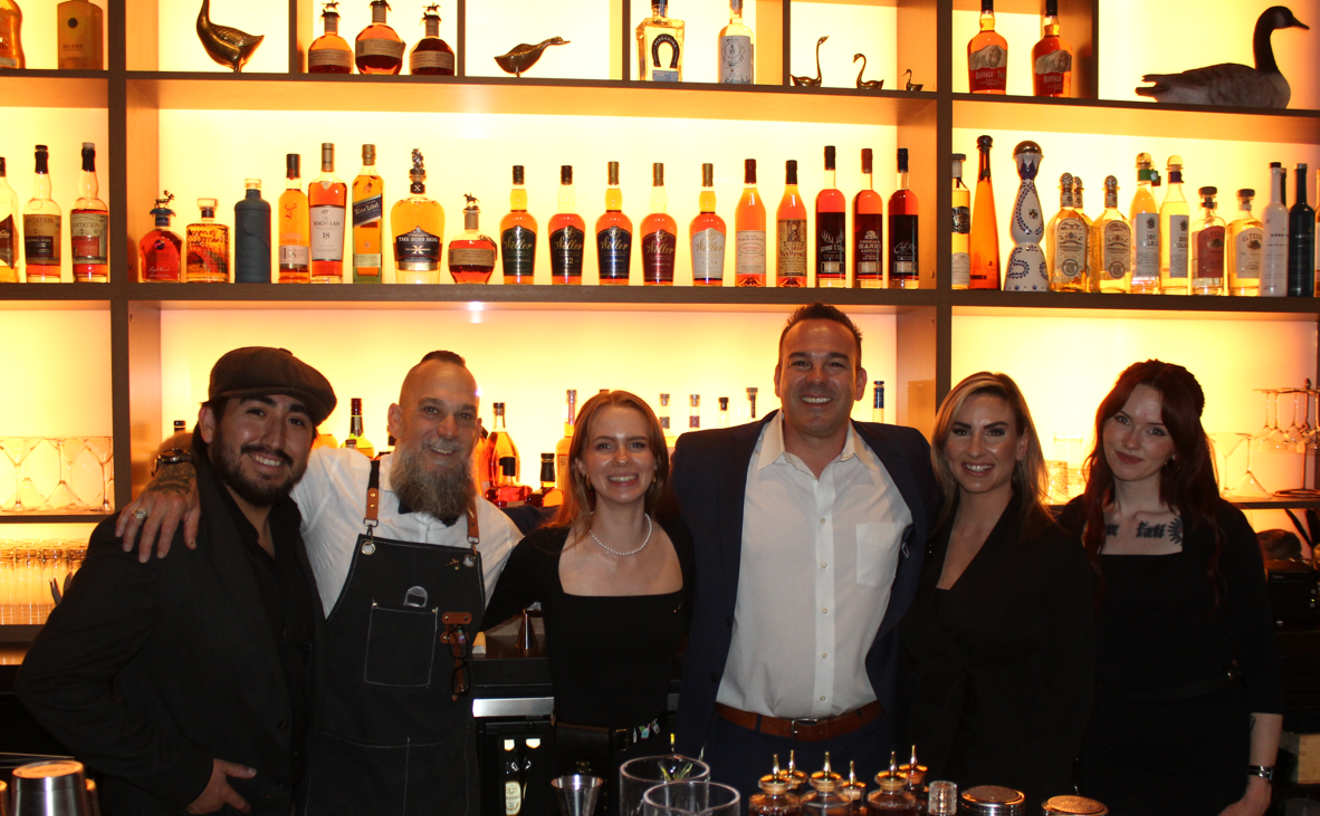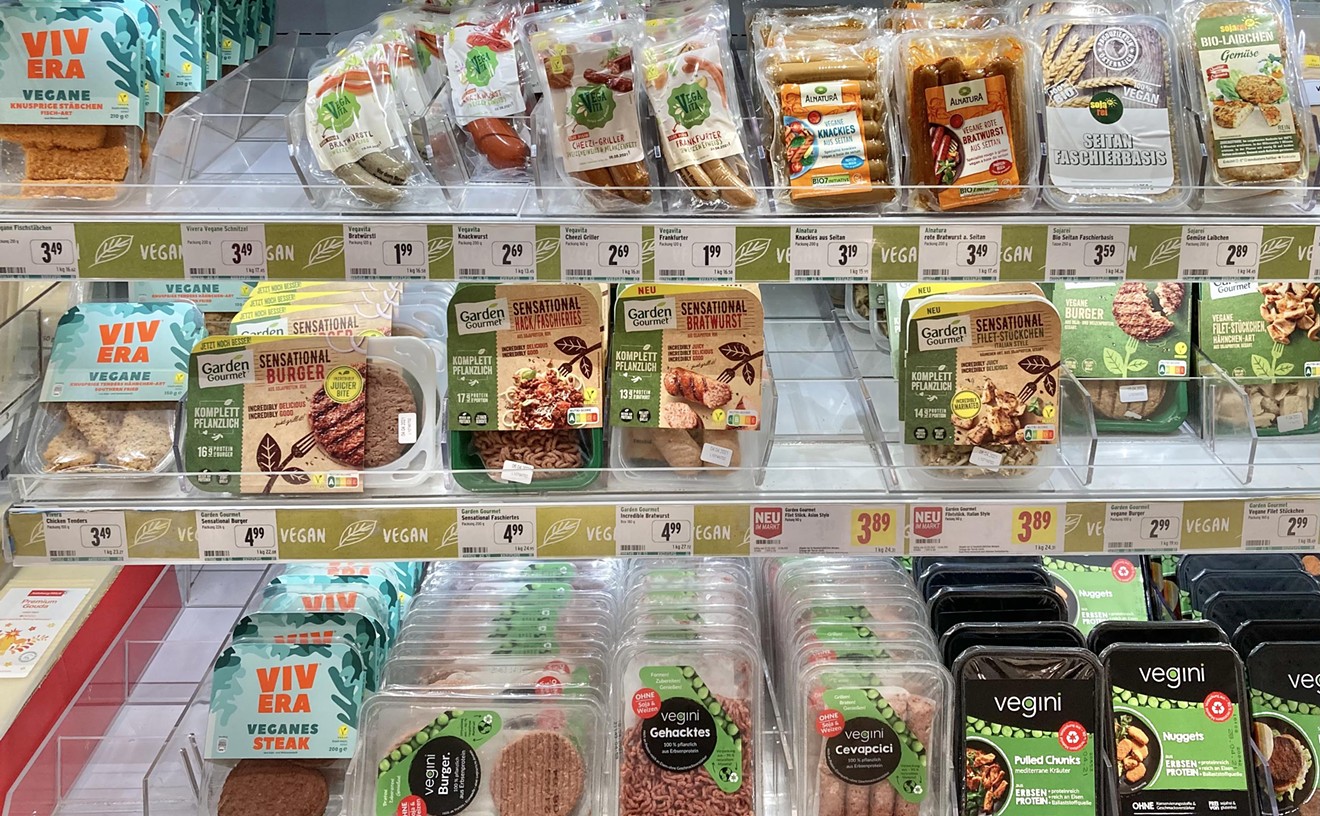I worked in the specialty coffee world for almost a decade before retiring to the blogosphere. If there's one thing I learned during that time, it's that there is a massive language barrier between cafes and coffee drinkers. As with any other industry, coffee comes with its own vocabulary of terms -- many of which have been modified or mangled as the industry itself has changed. Here's a brief introduction for the bewildered.
See also: What's My PHX Coffee Shop? A Flowchart.
The Basics: Brewed Coffee is the black or brown liquid that many people have in mind when they think of coffee. If you want the basic deal, this is what you should ask for.
Brewed coffee can be prepared a billion ways, and many shops offer an array of different brewing methods. Pourover brewing is just what it sounds like: hot water is steadily poured over a "bed" of coffee grounds, some beautiful chemical mumbojumbo happens, and you wind up with a cup of coffee. Pourover brewers generally utilize some type of filter (usually paper). The filter traps a lot of little coffee particles, which means the resultant cup is generally clean and articulate.
If you want a heftier, fuller-bodied cup of coffee, ask if your favorite shop offers any immersion brew methods. The most mainstream of the immersion brewers is the French press, but an immersion brew is any method of brewing coffee wherein coffee grounds are steeped in water for a period of time (generally four to five minutes). The grounds are then filtered out, generally by a mesh screen of some kind. This screen traps the bigger particles but lets more of the little ones through than, say, a paper filter would. Immersion brewed cups have big, fat bodies and usually have a somewhat viscous, oily mouthfeel.
Espresso is a method of brewing coffee by the application of pressure. Espresso is a tiny little drink (less than 2 ounces) with a huge set of jargon-y terms to be conquered. It can be excellent on its own, but espresso also serves as the base of a number of other espresso drinks.
A lot of people panic when they look at a cafe menu and gravitate toward an Americano without really knowing what it is. This drink is the whiskey soda of the coffee world: espresso, plus water, equals an Americano. If you're new to coffee and want to ease into exploring espresso, Americanos are a great place to start. You'll taste all the flavors of the coffee, but spread out a little bit so they're easier to interpret.
I like to break down coffee flavor traits into three basic categories for new drinkers. By this, I don't mean flavor additives, but rather inherent qualities that a coffee naturally possesses. These are in no way comprehensive, but they can help ease communication between barista and customer.
As a general rule, try to stay away from using terms like "bold" or "robust." These terms are vague, and don't give a barista much information about your preferences. Instead, talk about body: Do you want something full-bodied or a little less so?
If you like a tangy, fun coffee, ask your barista for something bright, fruity, or juicy. "Bright" is how coffee folk describe cups that are pleasantly acidic, but not overwhelmingly so.
If you want a coffee with candy-bar like qualities (think milk chocolate, peanut butter, caramel), ask for a sweet, balanced, full-bodied cup.
If you want a hefty coffee with a big, fat body, you have a few options. Ask for something dark chocolatey, earthy, or natural-processed. We'll talk about processing a different day, but naturally-processed coffees have a tendency towards rich, concentrated, red wine-type flavors.
The Fancy Stuff: When we talk about the Fancy Drinks (defined by me as anything containing ingredients other than water and coffee), we're usually talking about ratios. I'm about to make it super easy for you to interpret any cafe menu, because pretty much everything in coffee can be broken down in terms of proportions. We'll start with the drinks containing espresso and a small amount of milk, and build from there.
Here's what you need to know about milk: Steam wands add heat and incorporate air into milk. Adding heat unravels proteins, which then wrap around tiny air bubbles to form milk foam. The lower the fat content in the milk, the more readily this process will happen - so skim milk and soy milk will form thick, chunky foam on top of thin, liquid milk, while half and half barely forms any foam. The terms "Wet" and "Dry" are used to describe the amount of foam a drink has (dry means lots of thick, pillowy foam, wet means less foam).
I'm a big advocate for keeping at least some of the milk fat in your coffee. Fat helps maintain a smoother, creamier texture in milk-based beverages. And the flavors of the espresso tend to meld better with the butteriness of the milk when there's a little sumpin'-sumpin' thrown in there. If you've got reservations about drinking whole milk, opt for 2%, or order a smaller sized drink.
Heating milk also breaks down long-chain carbohydrates into simple sugars, which means that steaming milk makes it taste sweeter -- up to a point. If milk is steamed too hot, these sugars break down a little too much, and the sweetness starts to dissipate. If you're an extra hot latte kind of a person, try it at a cooler temperature someday; you might be surprised by how naturally sweet milk can be.
The word "Macchiato" might be the most terrifying thing about coffee. Here's the deal: A macchiato should be an itty bitty drink, just espresso with a tiny amount (maybe an ounce) of steamed milk. It shouldn't be more than 3-4 ounces in size. It's not uncommon to see this word with other words in front of it -- "caramel," for example. A caramel macchiato is not at all like a real macchiato - it is large and sweet, not small and coffee-forward. That's not to say that it can't be delicious, it just means that it's different. If you're interested in something big and sweet, tell your barista that; they'll be able to point you in the right direction.
American coffee is divided by another coffee drink -- the Cortado, also known as the Gibraltar. Preferred nomenclature varies by coast and by cafe, but these drinks are total twinsies. About five ounces in size, and named for the glass in which it is served, the Gibraltar / Cortado is probably my favorite of the Fancy drinks. Comprised of espresso and about three ounces of milk steamed to a cooler temperature than, for example, a latte, the drink is designed to be drunk quickly. Note: the American standard for the Cortado / Gibralter complex differs dramatically from the European definition (espresso topped with very hot, generally un-steamed milk).
Cappuccinos can be very intimidating, even to experienced coffee drinkers. This probably has a lot to do with the massive range of definitions for this drink. At the heart of it, a cappuccino is steamed milk and espresso. Some shops insist that cappuccinos should be defined by the amount of milk foam atop the beverage, others define by size, still others by temperature. The best course of action here is to consult with your barista about the shop's style of cappuccino, and then to state your preferences. For example: I prefer a small (five- to six-ounce), low-temp, wet cappuccino.
Lattes are by far the most versatile Fancy drink on any cafe's menu. This drink is identical, ingredient-wise, to all of the other fancy drinks, but has the highest ratio of milk to coffee. The amount of milk has a tendency to mute the flavor of the espresso, so if you're not sold on the whole espresso thing yet, a latte can be still be an excellent vessel for caffeine delivery. Lattes can be iced! They can be sweetened and flavored! And if you add a little chocolate, you've got yourself a Mocha.
Don't be afraid to ask your barista for help finding the 100 percent perfect drink for you. Most of them are kindhearted folks, and now that you've got the basic vocabulary down, you'll be able to communicate your desires more effectively.










